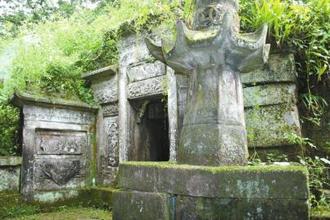The Stone Tombs of the Qing Dynasty Found in Zhujia Village of Leizhou

Recently, the author and city and county cultural relics and archeologists were invited to visit Zhujia Village, Beihe Town, Leizhou, and discovered a Qing Dynasty ancient tomb. There is a one-meter-high stone monument standing in front of the tomb, and the monument is engraved with the tomb of the emperor of the Qing Dynasty (Zu Qingcheng and Zhu Rongji). This monument is for its two sons, Gong Yuan Zhu Zirong and Qinci Shi Lang Zhu Zixu. Zhu Yuangui was a jinshi in Qing Jiaqing and his two sons were officials in the capital.
According to reports, the imperial examinations in the Ming and Qing dynasties were divided into three grades. The first grade was the county-level county for children in the trials, the second scholarship for talented scholars in the second scholarship, and the fourth tribute test for the “tribute studentsâ€. The emperor asked a total of three grades to call the jinshi and the first, respectively the champion and second place. Explore flowers. The tomb of Jinshi Zhu Guigui appeared in Zhujia Village and provided valuable historical information for the study of the feudal society's imperial examination system.
The author and the archaeological expert of the cultural relics also visited the hillside woodland of Zhujia Village, and discovered the Wufu, Qipin and Jiupin Zhushi of “The Imperial Tomb of Emperor Wuqing, Zhongzheng Wuzheng, Wuzhengwu, and Imperial Courtâ€. There were more than 20 officials’ tombs and stone tablets, together with 6 well-preserved ancient tombs such as Zhu Yonggong and other stone car seats that were discovered three years ago in Ming Yongle (1422), which constituted a gigantic Ming and Qing Zhu The tombs are spectacular. Zhu Fa is the first ancestor of Zhu Shi Qian Lei. His ancestral home is Zhu Shixiang Village, Putian County, Fujian Province. He was the prince of the Yongle Emperor in the Ming Yongle Period and was later retired to the Zhujia Village. After surveying the Ming and Qing dynasty tombs, city and county cultural relics and archaeologists marveled at the fact that there were more than 20 tombs worthy of the value of cultural relics in a small village, which was a wonder for more than 600 years.